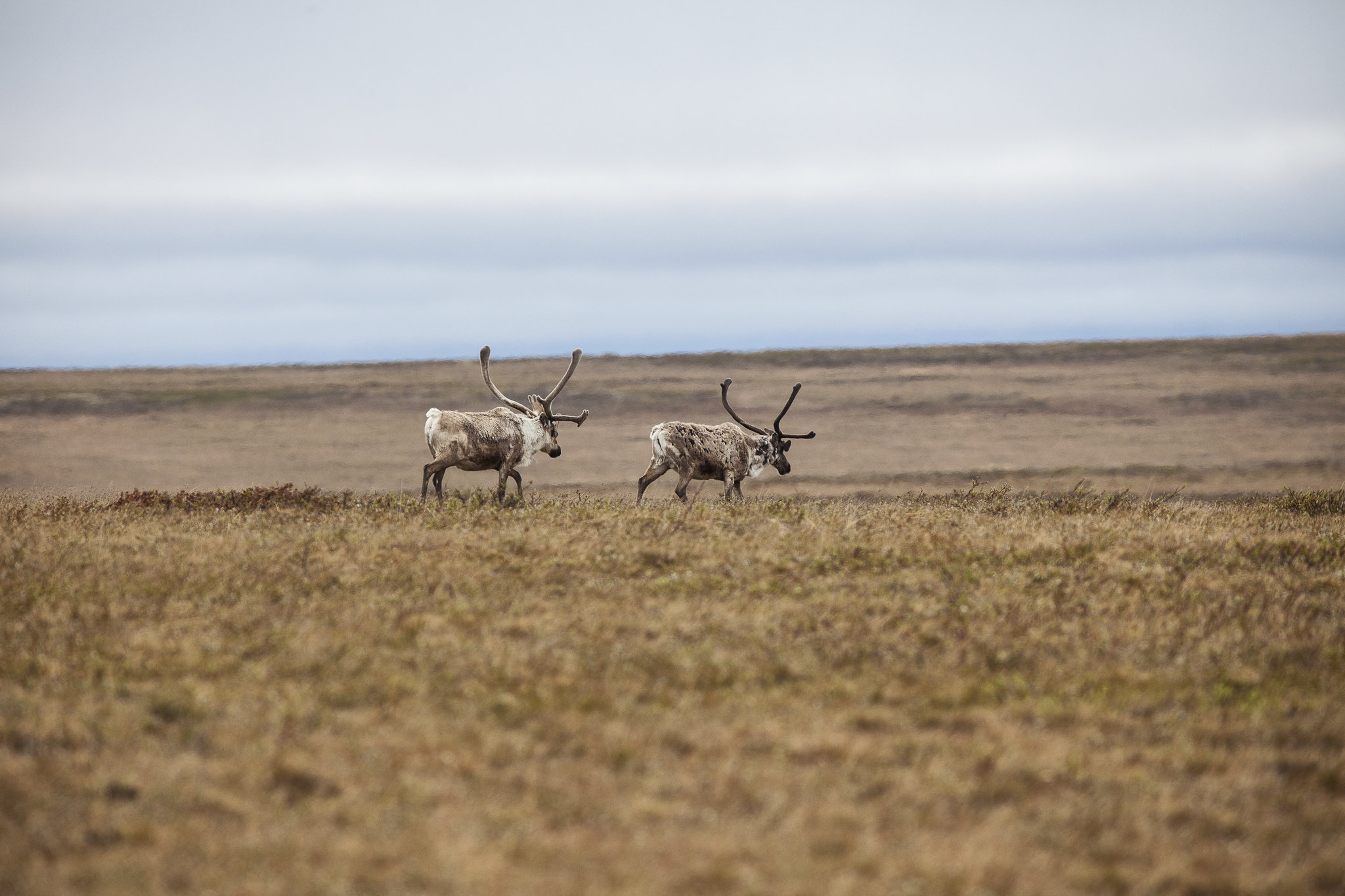Citing climate change and wildlife impacts, a new lawsuit seeks to overturn approval of an Arctic Alaska oil project
The Willow project, in the National Petroleum Reserve - Alaska, would be the North Slope's westernmost field.

A lawsuit seeking to overturn the Trump administration’s approval of a massive new oil project on Alaska’s North Slope alleges that agencies within the Interior Department vastly understated impacts on climate change and expected harm to caribou and polar bears.
The lawsuit, filed Monday in U.S. District Court in Anchorage by three environmental groups, targets Interior agencies’ recent approval of ConocoPhillips’ Willow Master Development Plan.
The Willow project, located in the National Petroleum Reserve in Alaska, is set to be the westernmost producing oil site on the North Slope. It would produce 586 million barrels of oil over a 30-year lifespan, with peak daily production up to 160,000 barrels, according to estimated provided by ConocoPhillips and incorporated into federal planning.
Interior’s approvals of the Willow development plan are based on flawed assumptions and analysis that violated several environmental laws, and those approvals should be scrapped, the lawsuit argues. The plaintiffs are the Center for Biological Diversity, Friends of the Earth and Greenpeace.
The Bureau of Land Management’s environmental impact statement on the project vastly understated the net greenhouse gas emissions that would be produced by the Willow project, the lawsuit says. The BLM used an “implausible” calculation method that was rejected by the 9th Circuit Court of Appeals when that court voided the Trump administration’s approval of the Arctic offshore Liberty project proposed by Hilcorp Energy Co., the lawsuit said.
The BLM also glossed over impacts of the Willow development, with its planned 37 miles of gravel roads, two airstrips, hundreds of miles of ice roads and other infrastructure, to the Teshekpuk Caribou Herd and the communities that rely on it. The Teshekpuk herd, named for the biggest lake in Arctic Alaska, is the only herd in the state that does stays on the North Slope year-round.
“The Willow Project would be the first development project within the year-round range of any Alaska caribou herd, creating unprecedented potential contact with oil and gas development and activity throughout the year,” the lawsuit says.
The U.S. Fish and Wildlife Service, in granting approvals for ConocoPhillips to accidentally disturb polar bears, has vastly underestimated the harm that Willow will inflict on that threatened population, the lawsuit also alleges.
The Willow Master Development Plan will have a disastrous impact on the pristine landscape of the Western Arctic region, particularly the Teshekpuk Lake Special Area and the Indigenous communities that depend on it,” Earthjustice attorney Jeremy Lieb, who is representing the plaintiffs, said in a statement. “ConocoPhillips’ pursuit of this plan is environmentally reckless, ignoring the escalating risks of a global climate crisis.”
A spokesman for the BLM defended the Willow planning process.
“We stand by the analysis underlying the Final Environmental Impact Statement for the Willow Master Development Plan, which will provide more access to valuable resources in the National Petroleum Reserve in Alaska (NPR-A),” BLM spokesman Richard Packer said by email. “ Our science-based decisions are legally compliant and based on an extensive process involving input from BLM career subject matter experts and the public. The BLM continues to implement its multiple-use mission balancing safe and responsible natural resource development with conservation of important surface resources.”
Trump administration’s plans for oil development in the NPR-A are under attack in two other pending environmental lawsuits. Those complaints, filed in August, seek to overturn the approvals of a new integrated activity plan that opens more than 80 percent of the reserve to development. The new Trump plan replaces a more protective Obama-era plan that allowed oil development on about half of the reserve. Among the changes the Trump plan made was opening Teshekpuk Lake — an area protected since the 1980s — to oil leasing and drilling.